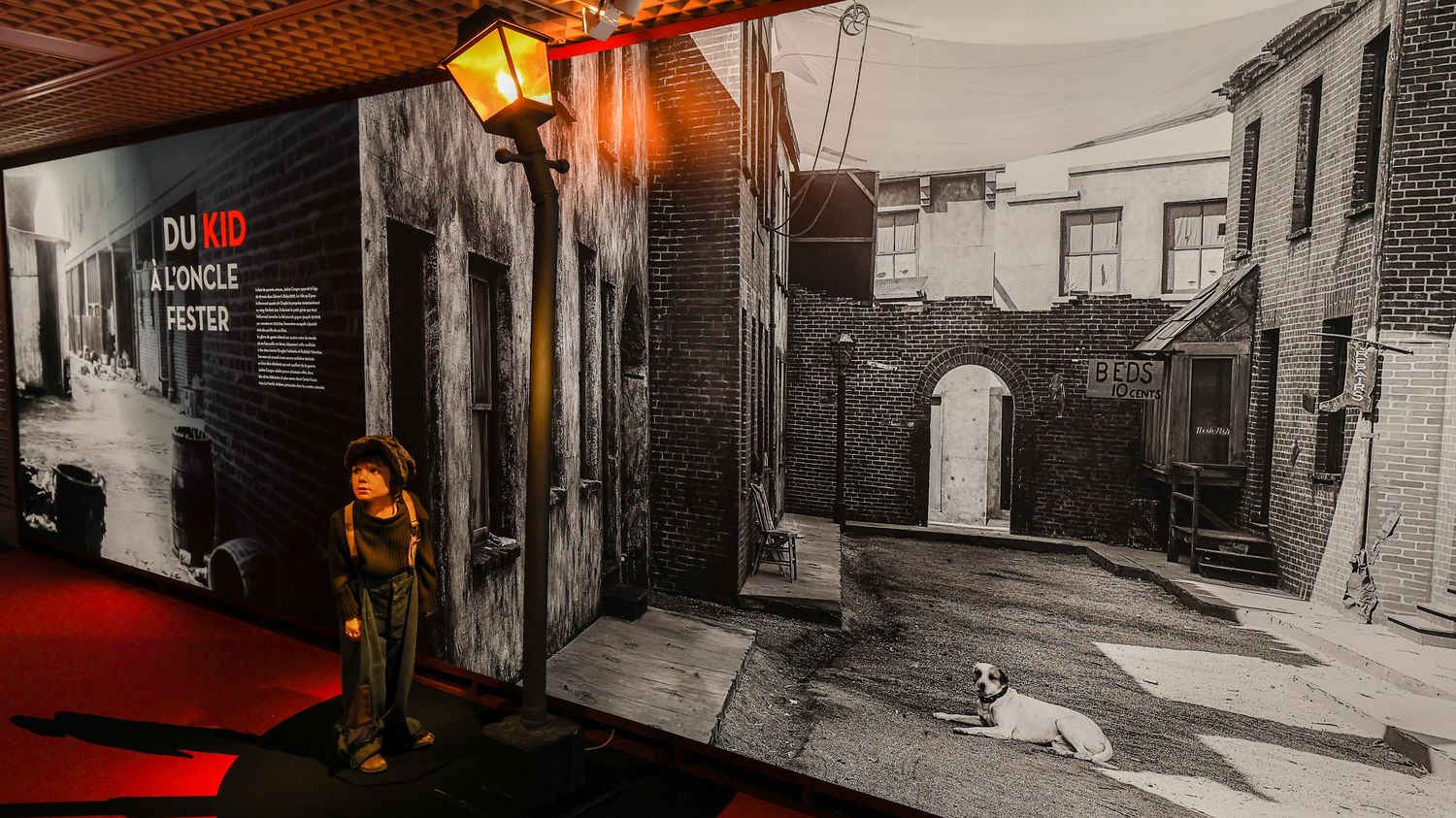By revealing the behind-the-scenes footage of the filming of “The Kid”, the exhibition shows how this feature film by Chaplin, made in 1921, also remains his most autobiographical film.
Published
Reading time: 3 min

Every summer, the city of Cannes honors the emblematic figures of the 7th art At breast of an ephemeral museum installed at the Palais des Festivals. After Goscinny, Louis de Funès and Romy Schneider, It is SO Charlie Chaplin, who is in the spotlight until August 25th through an exhibition dedicated to his first medium-length metroage, The Kid.
Prepared with Yves Durand, the creceiver from the museum park Chaplin’s World in Corsier-sur-Vevey (Switzerland), she shows how Charlie Chaplin drew on his own impoverished childhood to tell the story of a Tramp who takes a young orphan under his wing.

Exhibition “The Kid, Charlie Chaplin”, at the Ephemeral Museum of Cinema, in Cannes.
.
(FRANCE 3 COTE-D’AZUR / C. Becq / D. Da Meda / K. Schmid)
By immersing the visitor in 19th century London, the exhibition allows us to discover the conditions in which Charlie Chaplin grew up. The attic where Charlie and the Kid live looks just like the one where the cinema once lived.you in his childhood. Charlie also experienced the abandonment that the little boy suffered somehow.
His father died when he was 12 years old. His motherShe, suffers from dementia And chained stays in psychiatric hospitals. Despite this, she always occupied a place preponderant in Chaplin’s life. As evidenced by the letters moving exchanges between mother and son that the audience can discover in this exhibition.
And it was a personal drama experienced by Chaplin that perhaps constituted the driving force behind the genesis of The Kid. His young wife, Milded, gave birth to a malformed baby boy who died after three days. This trauma brought Chaplin out of the creative impasse he was in at the time.
Shortly after his son’s death, he imagines the story of a Charlie Chaplin who becomes a surrogate father to an abandoned child. It was by chance that he met the man who would play this child in a cabaret. The cabaret artist brought his 4-year-old son on stage. A sparkling boy who was very good at imitating expressions: Jackie Coogan.

Between the child and the filmmaker, a real complicity was born. For Jackie, it was also the beginning of a career in cinema. If he never found the quality of Chaplin’s films, he participated in “profitable” films. The exhibition tells how, aAfter her father’s accidental death, Jackie’s mother and stepfather took almost all of her fortune.
As recalled Maud Boissac, the Director of Culture for the City of Cannes, A lawsuit filed against them by Jackie Coogan in 1939 gave rise to the Coogan Act, which protected the income earned by child actors until they came of age.
Beyond this discovery of the genesis of the film, the interest of this exhibition, which is divided into eleven spaces, is also to propose multimedia installations, screenings and interactive workshops.
Thus, the Nickelodeon space is an old-fashioned movie theater where several of Chaplin’s short films are screened. Another space presents magic lantern shows (the beginnings of cinema that fascinated Chaplin in his childhood). An installation created in collaboration with the Museum of the Photographic Camera in Vevey (Switzerland).

“The Kid, Charlie Chaplin”, until Sunday August 25 2024
Palace of Festivals and Congresses, 1 Boulevard de la Croisette, Cannes
Every day from 2 p.m. to 10 p.m., prices : from 2.50 to 4.50 euros
